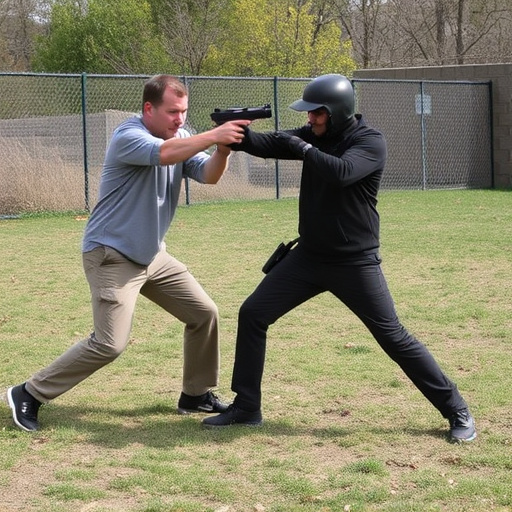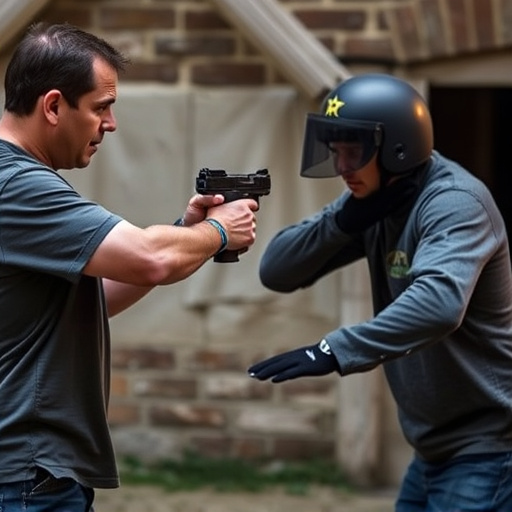Analyzing Taser Paralysis Duration: Most Powerful Legal Stun Weapons Examined
Tasers, officially Electronic Control Devices (ECDs), are the most powerful legal stun weapons used…….
Tasers, officially Electronic Control Devices (ECDs), are the most powerful legal stun weapons used by law enforcement, temporarily paralyzing targets through electrical current. Their deployment is strictly regulated globally, with specific training and oversight required. The duration of paralysis varies based on model, body type, and environmental conditions, influencing their effectiveness and potential risks. Studying these durations aids law enforcement in making informed decisions when selecting stun weapons for public safety and legal compliance.
“In today’s law enforcement landscape, understanding the impact of taser deployment is crucial. This article delves into the effects of these powerful legal stun weapons on the human body, offering a comprehensive analysis of their capabilities. We explore the duration of paralysis caused by tasers, a critical aspect in legal considerations and regulations. As we navigate the world of stun weapons, uncovering the truth behind their effectiveness as most powerful legal stun weapons is essential for both professionals and advocates alike.”
- Understanding Taser Deployment and its Effects on the Body
- Legal Considerations and Regulations Regarding Taser Use
- Analyzing Paralysis Duration: A Comprehensive Look at Legal Stun Weapons
Understanding Taser Deployment and its Effects on the Body

Tasers, officially known as Electronic Control Devices (ECDs), are considered some of the most powerful legal stun weapons in law enforcement’s arsenal. They function by delivering a strong electrical current through two probes connected to cables, temporarily incapacitating a target. When deployed, Tasers cause muscle contractions in the body, leading to paralysis and loss of balance. This rapid response can help officers control and subdue individuals who pose a threat or are resistant to other forms of restraint.
The duration of paralysis caused by a Taser deployment varies based on factors like the model of Taser used, the distance between the probes and target, and the individual’s body type and muscle mass. Typically, the effects last for several seconds, during which time the person is temporarily incapacitated. It’s crucial to understand that while Tasers are designed as non-lethal weapons, their use can still result in temporary injury or discomfort, and they should be employed responsibly and according to established guidelines.
Legal Considerations and Regulations Regarding Taser Use

In many jurisdictions, the use of tasers by law enforcement and security personnel is regulated by stringent rules and guidelines aimed at ensuring their responsible deployment. These regulations often categorize tasers as powerful legal stun weapons, requiring specific training, authorization, and oversight for their use. The legal considerations surrounding tasers involve balancing public safety with individual rights, leading to diverse policies worldwide.
The primary focus of these regulations is to govern the circumstances under which a taser can be employed, ensuring it’s only used as a last resort when less lethal force options are ineffective or unavailable. Many countries have established independent bodies to oversee and investigate incidents involving taser deployments, especially in cases where there are complaints or allegations of misuse. This oversight helps maintain accountability and discourages excessive use, contributing to the overall safety of both citizens and officers during high-stress situations.
Analyzing Paralysis Duration: A Comprehensive Look at Legal Stun Weapons

Analyzing paralysis duration is a critical aspect of understanding the impact and potential risks associated with the use of legal stun weapons, also known as Tasers. These devices are designed to incapacitate individuals through a powerful electrical shock, but the length of paralysis can vary significantly. The most powerful legal stun weapons on the market often claim to deliver intense jolts that can leave targets immobilized for several minutes. However, it’s essential to consider that factors like the model of Taser, the user’s body type, and environmental conditions can influence the duration of paralysis.
Legal stun weapons have evolved over time, with manufacturers constantly striving to create more effective and safer devices. The most powerful models often incorporate advanced technologies, such as improved safety features and enhanced shock delivery systems. These innovations aim to minimize collateral damage while maximizing the weapon’s effectiveness. By studying the parity duration across various models, legal authorities can make informed decisions when choosing the right stun weapon for their needs, ensuring both public safety and compliance with legal standards.
In light of the above discussions, it’s clear that understanding the duration of paralysis from taser deployment is crucial. As we’ve explored, most powerful legal stun weapons like tasers can induce temporary paralysis, but the exact length varies widely. This variability underscores the importance of rigorous regulation and training to ensure their responsible use. By analyzing these factors, we can navigate the complex landscape of taser deployment, fostering a safer and more effective approach to law enforcement tactics.


